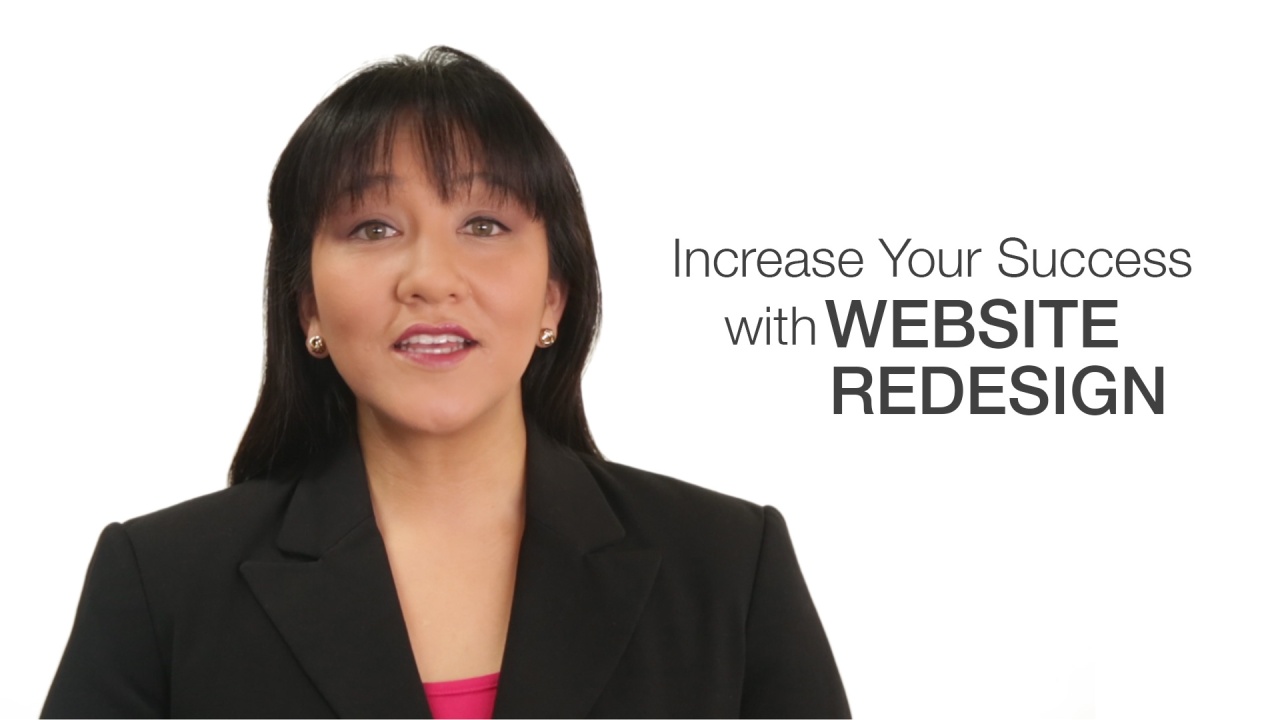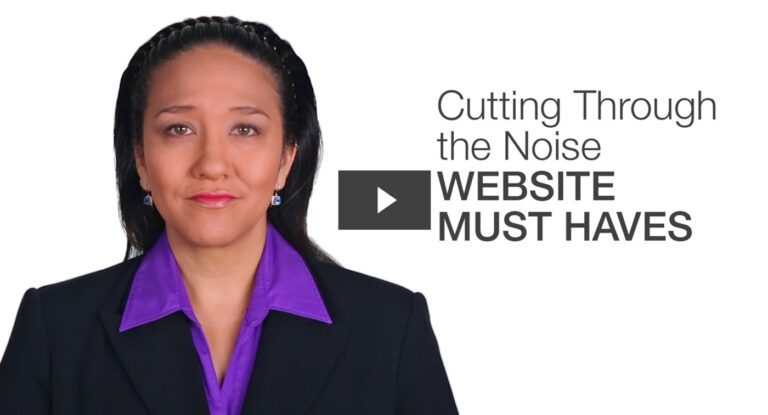It may have been the case in the past that simply having an online presence was enough to give you a fair shot against your competitors. In 2017, that couldn’t be further from the truth. Now that everything is web-centric in this digital age, you can’t expect a sub-par website to be of any service to you at all. If your site isn’t getting the traffic you want, has an outdated look, or employs outdated or obsolete technology (we’re looking at you, Flash), it may be time for a website redesign.
If you’re wondering where to start, you’re not alone. Read on, brave redesign pioneer!
Website design may or may not seem easy, but planning and strategizing a new website properly can be a daunting task.
What if we can make the process a little easier?
In today’s FAQ Friday, let’s try to make your website redesign process from start to finish a seamless one. Let’s start with this general outline of what to expect when you are planning your project, and then move on to providing answers to your most frequently asked website redesign questions.
Websites promote you 24/7: No employee will do that.―Paul Cookson
What are the proper steps to take during a website redesign?
This is a great question. Often times I see companies who have identified a need for a new website because it has been months, if not years since, they have changed anything on the site. They are usual working against a big deadline like a new product launch or re-brand, or they have realized that maintaining a digital presence is essential to success.
So let’s dive into a suggested process for redesigning your company website.
Stage 1: Plan
The most important stage of a website redesign project is the planning stage, which includes strategy development. Planning your website design without a strategy is asking for failure. Likewise, diving right in and designing your website without planning can produce glaring problems in the long run.
You need to understand so much more to create a website that actually serves the company and supports its goals.―Jami Oetting
Through proper planning, you want to make sure that your user experience is in line with your buyer personas. You want to look at your short-term and long-term goals to see how they can be reflected on your website. You want to make sure that you create a timeline that includes adequate time for asset development, design, testing, etc.
All this and more is required in the design stage. So take your time. Map out what your users need and what you need along with the assets necessary for you and your team to create this site.
Questions to consider during the planning stage:
- What is the purpose of your website redesign?
- What end goal are you hoping to achieve through this redesign?
- What is your timeline?
- How long will it take to plan, design, develop, and test your website?
- What resources or content will you need for your website?
- Forms
- Blog posts
- Images
- Animations
- Videos
- Infographics
- Who are you trying to attract to your website?
- What kind of user experience are you trying to create for them?
- What is the functionality of your website?
- How will you plan and outline your website’s architecture?
- How will your content flow on each webpage?
- How will you rank your content?
- What content is needed and which is more important?
- Video
- Call to action
- Website copy
- Images
- Testimonials
- What content is needed and which is more important?
- How will you rank your content?
- Who is creating your website?
- Will this be an in-house job or will you need outside assistance?
Our websites are fluid, so our processes and workflows need to match.—Brad Frost
Timing and cost are not the most important parts of a website redesign.
Stage 2: Design
The design stage is just that—designing. In this stage, you will need to design a visual layout or wireframe of your website, create your website copy, and create your assets, i.e., images, videos, etc.
Questions to consider during the design stage:
- What is your brand’s style guide?
- Is your brand’s style guide in line with your message and your buyer personas?
- Who will create the assets for the website?
- Do you have a review process in place for the following?
- Website design review
- Content review
- Website copy review
- Additional assets review
- Call to actions
- Buttons, etc.
- How many rounds of revisions will you have?
Pro Tip: Considerations during the design stage:
- Stay content focused first. Make sure that your content is the framework for your visuals. It will help with the flow of your design layout.
- Review your style guide throughout the process to retain consistency from your assets to your overall website.
Content precedes design. Design in the absence of content is not design, it’s decoration.—Jeffrey Zeldman
Stage 3: Develop
In the development stage, it’s all about putting everything together, testing it out, and getting it ready for launch. Installing plugins, building templates, optimizing your content, and testing your performance are key to this stage, especially optimization.
Pro Tip: Considerations during the development stage:
- Create a list of keywords that align with your buyer personas.
- Make sure your website copy and content is optimized with those keywords.
- Test your website’s performance on various devices and platforms, i.e., Firefox, Chrome, Safari, smartphones, tablets, etc.
- Allow your users to test your website in order to see how your ideal audience interacts with the site.
- Make sure to track any technical problems and then cross them out when they’ve been fixed.
- Continue to test even when your site is live to keep your website fresh and relevant for your users.
After these three stages, you are ready to launch. But you’re not done just yet. Your website is your top salesperson. However, it can only perform at its best through constant testing and relevant updates. Review for yourself on how to increase your marketing success with effective website redesign with this In-Sites video:
- Speed1x
- Quality540p


Thanks for reporting a problem. We’ll attach technical data about this session to help us figure out the issue. Which of these best describes the problem?
Any other details or context?
Remove the risk from the website redesign process by having a systematic approach to making consistent updates and improvements to a website every single month.—HubSpot
How much does it cost to redesign a website?
Skirting cost questions is a pet peeve of mine, but sometimes it has to be done—this is one of those cases. Since all websites are so different, the cost for website development varies enormously.
The first and most important part of website costs will depend on how big your current website is, how it will change, and how much new content will need to be developed. If you are looking at your website as the marketing and sales machine it should be, then your cost will depend on the goals you have set for its performance. Determining website cost involves getting hold of a planning and managing strategy.—Direct Images Interactive
Everyone has a different amount of content in-hand. Some businesses start their redesign, ready to throw out all their old content and replace it. Other businesses may have content in their back pocket that they can use for their site revamp. Some may have a solid design sense, and inspiration in mind, while others may be completely new to design concepts and need more guidance. All these (and more) factors will make a huge impact on the cost of a website redesign.
You may have already contacted a web design firm and gotten a few different—perhaps vastly different—estimates back.
These numbers shouldn’t put you off, however, since most new websites cost between $15,000 and $35,000, even for medium-sized companies. The price for a website redesign can be itemized further based on how many of the following features you’re looking for:
- Ongoing blogging services
- Content management system
- E-commerce integration
- Ongoing social media management
- Search engine optimization
- Web hosting
- Continued website maintenance
One cost that you’ll want to seriously consider adding to your website is mobile responsiveness. This can raise the overall cost of your website by approximately 20%, yet the consequences of not reaching mobile customers could spell much more in lost opportunities over time.
Also, remember that 80% of consumers use their smartphones for shopping, as this might put an extra incentive on business owners to buy e-commerce integration as an add-on service.
Pro Tip: Inbound marketing and social media management also makes a lot of sense in light of the continued ROI of bringing more prospects into the fold and increasing your brand exposure.
What should I know before getting involved in the website redesign process?
As I mentioned above, the website redesign process has several steps. Even before you’re thinking of themes, or site organization, you need to think about your current site. I’m sure you’re not seeking a redesign because you absolutely love everything about your site. Take note of what needs to go, and what you think works well as is. You should incorporate as much concrete data on this as possible—anything you have gathered from A/B testing, user surveys, or the like, will be incredibly helpful in the redesign process.
Next, take into account your buyer personas and target market. If you don’t have this information already, you’ll want to get it sorted out before starting your redesign. This will take time, but it will save you both time and money in the long run. You’ll also need to do a content audit around this time. Think about all the content you want on your site, what you’d like to keep and cut, and how you’d like it organized on your new site. Hopefully, around this point, you will end up with a sitemap that will be useful for the remainder of the process.
For more information about buyer personas check out this In-Sites Video:
- Speed1x
- Quality540p


Thanks for reporting a problem. We’ll attach technical data about this session to help us figure out the issue. Which of these best describes the problem?
Any other details or context?
You can also download the Buyer Persona Workbook
After this, you’ll want to take stock of your brand and style guidelines. Do you want your brand to come off as family-friendly? Strong and powerful? Cutting-edge and trendy? Next, cull inspiration from sites you like, screenshot sites, and organize images into a file. After all of this is sorted, you need to set a realistic timeline for your redesign and set goals for your new redesign, so that you can track whether or not it is successful. This will point to areas that need improvement and serve you well for any future redesign, as well. The entire process should get smoother each time you do it.
Once you have reached this point, the actual design can start. This will include wireframes, prototypes, and—you guessed it—revisions.
Pro Tip: All of these steps may have your head spinning, but if this has piqued your interest and you want a more in-depth review of this process, we suggest reading 10-Step Checklist for Your Website Redesign
How can business owners get the ball rolling?
Whether you want a new website or website redesign, taking the time to fill out a request for proposal is important for establishing a set of goals and expectations early on in the website development process.
You can also get a more competitive estimate of the job you’re looking for (e.g., search engine optimization on a pre-existing website) if you’re specific with the web developers.
At the request for proposal stage, you tell the web development firm the assets and limitations of your current site, or what you’re hoping to get out of a new website given your target audience and functionality requirements. Be sure to mention things like search engine optimization, branding development, e-commerce integration, and ongoing website maintenance if you’re interested in those services.
If you have questions you would like to see featured in our weekly FAQ Friday, please submit them in the comments below or mention us @DirectImages on Twitter. Until next FAQ Friday, keep your communication lines open. Don’t know the answer—just ASK.
Subscribe to our BLOG
Stay in touch & learn how to attract customers, become a thought leader, create effective marketing campaigns, & more.





